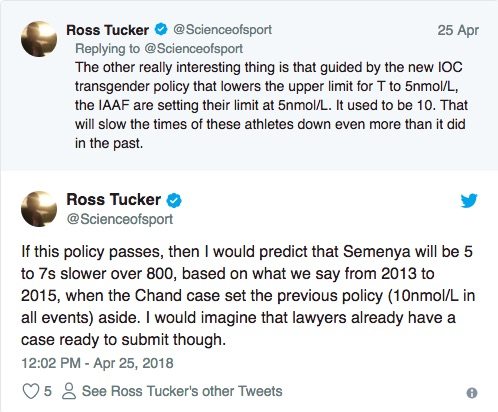New testosterone rules could impact Olympic athlete Caster Semenya

GOLD COAST, AUSTRALIA – APRIL 13: Caster Semenya of South Africa celebrates wins gold in the Women’s 800 metres final during athletics on day nine of the Gold Coast 2018 Commonwealth Games at Carrara Stadium on April 13, 2018 on the Gold Coast, Australia. (Photo by Michael Steele/Getty Images)
South Africa’s lesbian hyperandrogynous champion Caster Semenya could see her triumph grind to a halt due to a new testosterone policy introduced by the International Association of Athletics Federations (IAAF).
The governing sports body will introduce a rule which says that female runners can only compete if they have a 5nmol/L level of testosterone – a figure that would require Semenya to reduce her hormone levels in order to compete.
The policy, which will be introduced in November 2018, has been described as “suspiciously selective.”
It will only cover events between 400 and 1500 metres, which affects the specific categories in which 10-times gold Olympic gold medallist Semenya competes.

South Africa’s Caster Semenya (gold) poses on the podium after the athletics women’s 800m final (SAEED KHAN/AFP/Getty)
An expert believes that this will reduce the champion’s time by around eight seconds, which would take her out of the running at an Olympic event.

Semenya racked up thousands of retweets after she shared a suspected response to the ruling.

“I am 97% sure that you don’t like me, but I am 100% sure that I don’t care,” read the tweet.
The runner, who identifies as a lesbian, is classified as hyperandrogynous.
One of the symptoms of hyperandrogynism is that the person has a higher amount of testosterone than generally seen in a cis woman.
The runner shares a fraught relationship with the IAAF.

(Getty)
Ever since the South African runner won the 800m title as an 18-year-old in 2009, she has faced criticism and scrutiny while competing.
She was subject to gender testing by the Federation in 2009 to confirm that she is a cisgendered woman.
She was given the “all clear” to compete again in July 2010.
IAAF President Sebastian Coe said that the federation had a “responsibility to ensure a level playing field,” reported CNN.
“The revised rules are not about cheating, no athlete with a DSD has cheated, they are about levelling the playing field to ensure fair and meaningful competition in the sport of athletics where success is determined by talent, dedication and hard work rather than other contributing factors,” he said.

